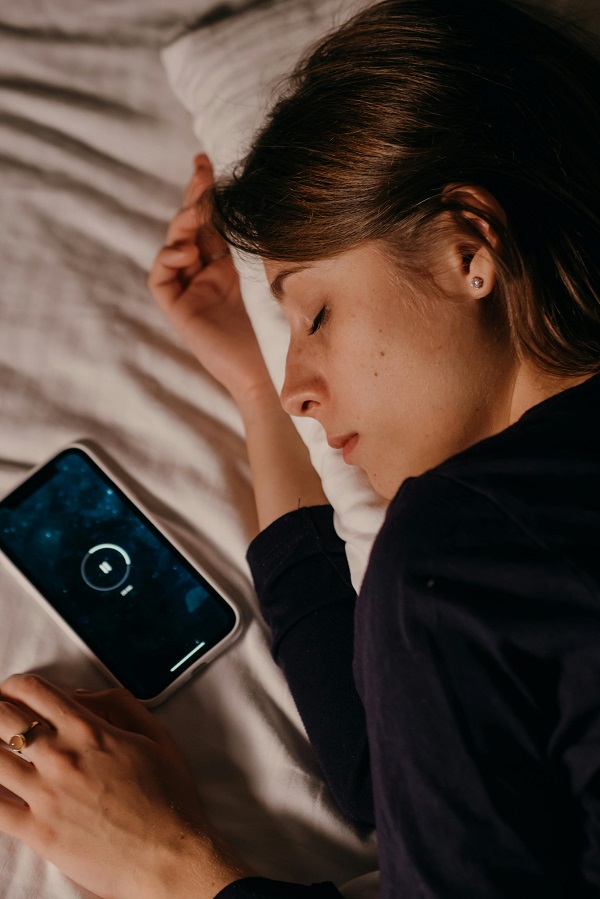The Get Real Guide to Screen Time: Setting Healthy Limits provides practical tips for managing screen time effectively. It emphasizes establishing boundaries to promote balanced technology use.
In today’s digital age, implementing healthy screen time practices is crucial for overall well-being. By incorporating strategies outlined in the guide, individuals can strike a harmonious balance between technology consumption and other aspects of life. The guide offers insights on creating a sustainable approach to screen time, ensuring individuals are equipped to navigate the digital landscape responsibly.
With the growing dependence on technology, adopting healthy screen habits is essential for mental and physical health. Through the guidance provided, individuals can cultivate a healthy relationship with screens and prioritize their overall wellness.

Discover More – Teenage Privacy Vs. Parental Supervision: Finding the Balance
The Impact Of Excessive Screen Time
Screen time has become an integral part of our daily lives, with many of us spending significant hours in front of devices such as smartphones, laptops, and televisions. While technology offers numerous benefits, excessive screen time can have a detrimental impact on our physical and mental well-being. It’s important to understand the negative effects of spending too much time in front of screens and take necessary steps to set healthy limits. Let’s delve into the specific ways excessive screen time can affect our physical and mental health.
Negative Effects On Physical Health
Excessive screen time can lead to a range of physical health issues. Here are some of the negative effects:
- Poor posture: Spending hours hunched over a screen can cause neck and back pain, leading to long-term postural problems.
- Sedentary lifestyle: Excessive screen time often means time spent sitting, which can contribute to a sedentary lifestyle. Lack of physical activity increases the risk of obesity, heart disease, and other chronic conditions.
- Eye strain: Staring at screens for prolonged periods can lead to eye discomfort, dryness, blurry vision, and even headaches. It’s essential to give our eyes regular breaks to prevent these issues.
- Disrupted sleep patterns: The blue light emitted by screens can interfere with our natural sleep rhythms, making it harder to fall asleep and achieve a good quality of sleep. This can result in daytime tiredness and decreased productivity.
Negative Effects On Mental Health
In addition to physical health concerns, excessive screen time can also impact our mental well-being. Here are some of the negative effects:
- Increased risk of anxiety and depression: Spending excessive time on screens has been linked to higher levels of anxiety and depression. This can be attributed to factors such as social comparison, cyberbullying, and reduced face-to-face social interactions.
- Reduced attention span: Constant exposure to screens can lead to a shortened attention span and difficulty focusing on tasks that require prolonged concentration.
- Impaired social skills: Excessive screen time can hinder the development of important social skills, such as effective communication and empathy, as it limits face-to-face interactions and real-life social experiences.
- Decreased self-esteem: Constant exposure to curated images and idealized lifestyles on social media platforms can lead to feelings of inadequacy, lower self-esteem, and a negative self-image.
Now that we are aware of the negative effects excessive screen time can have on both our physical and mental health, it’s crucial to take proactive steps to set healthy limits and strike a balance between screen use and other activities. By doing so, we can improve our overall well-being and lead a more fulfilling life.
Discover More – Supporting Your Child Through Academic Challenges
Setting Healthy Boundaries
Maintaining healthy boundaries around screen time is crucial for the overall well-being of children. Here are practical strategies to establish limits and create a balanced relationship with technology.
Establishing Daily Time Limits
Setting specific time restrictions allows children to enjoy screen time while also engaging in other activities. It promotes a healthy routine and prevents excessive device usage.
Creating Tech-free Zones At Home
Designating certain areas where screens are not allowed encourages face-to-face interactions and reduces dependency on devices for entertainment.
Finding Balance
Setting healthy limits on screen time is crucial for maintaining a balanced family dynamic.
Encouraging Alternative Activities
- Limit screen time by introducing fun activities like outdoor games and arts and crafts.
- Involve children in choosing activities to keep them engaged and excited to participate.
Incorporating Screen Time Into Family Time
- Designate screen time as a family activity to bond over movies, games, or educational videos.
- Set specific time slots for screen use to ensure it doesn’t dominate family interactions.
Managing Screen Time For Different Age Groups
Managing screen time for different age groups is crucial for promoting healthy habits. The Get Real Guide to Screen Time offers practical tips for setting limits and balancing technology use. Understanding the unique needs of various age ranges is essential for instilling positive digital behaviors.
Toddlers And Preschoolers
Toddlers and preschoolers require specific attention when it comes to managing screen time. The American Academy of Pediatrics recommends that children under the age of 18 months should avoid any screen time, except for video chatting. For children between 18 and 24 months, limited screen time with high-quality programs can be introduced, provided they watch it with a caregiver.
Here are some tips on how to manage screen time for toddlers and preschoolers:
1. Keep it interactive and educational: Choose age-appropriate content that engages them in learning and interactive activities. Utilize educational apps, games, and interactive videos that promote developmental skills such as language, cognitive abilities, and problem-solving.
2. Set time limits: Limit screen time to no more than one hour per day for toddlers and preschoolers. Break the screen time into smaller chunks and ensure they engage in other active activities and playtime throughout the day.
3. Co-viewing: Encourage co-viewing with your child. Sit down with them and join in their screen time experience. This not only strengthens the parent-child bond but also allows you to guide and discuss the content they are watching.
School-aged Children
As children grow older and enter school age, their screen time needs and habits will change. It becomes crucial to strike a balance between screen time and other activities. The American Academy of Pediatrics recommends setting consistent limits on the amount of time spent on screens and ensuring that screen time doesn’t interfere with schoolwork, sleep, or physical activities.
Consider the following strategies for managing screen time for school-aged children:
1. Establish clear rules: Set clear rules and boundaries regarding screen time usage. Communicate these rules to your child and consistently enforce them. This will help them understand their limits and develop healthy screen time habits.
2. Encourage a balanced routine: Encourage your child to engage in a variety of activities, both on and off screens. Encourage them to participate in physical activities, hobbies, reading, and spending time with family and friends. This helps them develop a well-rounded lifestyle.
3. Monitor content: Keep an eye on the content your child is exposed to. Ensure they are watching age-appropriate and educational content. Guide them on making well-informed choices and help them understand the impact of their screen time habits.
Teenagers
Managing screen time for teenagers can be challenging as they become more independent and responsible for their own choices. However, it is essential to guide them towards healthy screen time habits to avoid potential negative consequences.
Consider the following tips when managing screen time for teenagers:
1. Set boundaries and expectations: Establish clear guidelines for screen time usage, including both time limits and appropriate content. Discuss the importance of balance and encourage them to prioritize their responsibilities, such as schoolwork and chores, before spending excessive time on screens.
2. Lead by example: Be a positive role model by demonstrating healthy screen time habits yourself. Show them how to manage their time effectively and engage in alternative activities. Encourage family activities and quality time together without screens.
3. Foster open communication: Keep the lines of communication open with your teenager. Engage in conversations about their screen time habits, their online experiences, and any challenges they may face. Encourage them to turn to you for guidance and support when needed.
Remember, effective screen time management is crucial for children of all ages. By setting healthy limits and providing guidance, you can help your children develop a balanced relationship with screens and foster their overall well-being.

Discover More – Parenting Through Divorce: Keeping Kids’ Best Interests at Heart
Tools And Resources For Parents
When it comes to managing screen time for children, parents often need the right tools and resources to set healthy limits. Here’s a comprehensive guide for parents looking to make informed decisions through the Tools and Resources for Parents.
Monitoring Apps And Parental Controls
Monitoring apps and parental controls are essential to help parents keep track of their child’s online activities. These tools provide real-time insights into the apps and websites accessed, allowing parents to set appropriate restrictions and time limits.
Educational And Screen Time Management Apps
Education and screen time management apps offer a range of tools to help parents regulate their children’s screen time. These apps provide interactive educational content and features to manage and monitor screen time, ensuring a balanced approach to technology usage.
Frequently Asked Questions
What Are The Potential Effects Of Excessive Screen Time?
Excessive screen time can lead to digital eye strain, sleep disturbances, and decreased physical activity.
How Can I Set Healthy Screen Time Limits For My Child?
Establish clear rules and boundaries, use parental control tools, and encourage regular breaks.
When Should I Be Concerned About My Child’s Screen Time?
You should be concerned if it interferes with activities, social interactions, or physical health.
How Can I Encourage My Child To Engage In Other Activities?
Offer a variety of non-screen activities, set an example, and create tech-free zones in the home.
What Are Some Strategies For Managing Screen Time As A Family?
Openly discuss screen time rules, create a family media plan and model balanced screen use.
Conclusion
Developing healthy screen time habits is essential for both children and adults. By setting clear boundaries, being mindful of the content consumed, and prioritizing other activities, we can ensure a balanced approach to technology use. Remember, moderation is key. Utilize these tips and tools to create a healthy digital lifestyle that promotes well-being and connection.


